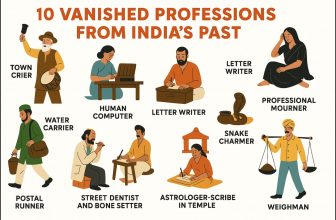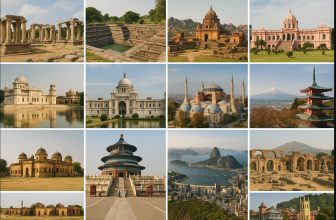Many of India’s most iconic figures, poets, musicians, freedom fighters, filmmakers, are celebrated today. Streets bear their names, their words are in schoolbooks, and their images decorate government buildings. But what’s often forgotten is how many of them lived their final years in financial hardship. Some died in debt, others with no pension, royalties, or even basic recognition.
This listicle doesn’t include saints or ascetics who voluntarily chose a life of simplicity. Instead, it focuses on those whose poverty reflected something deeper, a lack of institutional support, missing royalties, or sheer neglect, despite their national impact. Their lives expose how fame doesn’t always come with dignity, and how recognition often arrives too late.
Here are 20 such Indians who helped build the country and were financially abandoned by it.
1. Batukeshwar Dutt
A revolutionary who bombed the Central Legislative Assembly alongside Bhagat Singh, Dutt spent years in prison and faced health issues later in life. After independence, he received no pension or recognition, and died in financial hardship in Delhi in 1965.
2. Jaishankar Prasad
One of Hindi literature’s most respected poets and dramatists, Prasad struggled with illness and died in debt in 1937. His family sold manuscripts to pay off dues. Despite his literary impact, his work brought no economic security.
3. Saadat Hasan Manto
Manto, famous for brutally honest Partition-era stories like Toba Tek Singh, faced court cases, poverty, and alcoholism after moving to Lahore. He died in 1955, aged 42, in extreme poverty, despite posthumous global recognition.
4. Gauhar Jaan
India’s first recording artist in 1902, Gauhar Jaan lived extravagantly in her prime but died destitute in Mysore in 1930. She had no access to royalties or long-term financial protection, despite pioneering the recorded music industry.
5. Kavi Pradeep
The lyricist behind Aye Mere Watan Ke Logon had to fight for years to receive his rightful dues. Despite the song becoming a national anthem of sorts, Pradeep died in 1998 without fair financial compensation.
6. Master Manzoor
A lyricist from the 1940s whose songs became hits in early Bollywood. He died in obscurity and poverty, and his contributions were never formally preserved or compensated.
7. Begum Akhtar
Known as the Mallika-e-Ghazal, Begum Akhtar faced economic struggles early in her career. She later gained recognition, but ill health and inadequate support systems kept her financially insecure through much of her life.
8. Rasoolan Bai
One of India’s finest thumri singers, Rasoolan Bai suffered discrimination and neglect. Despite recording for All India Radio and being honored late in life, she died largely forgotten and financially unstable.
9. Bismillah Khan
A Bharat Ratna awardee and shehnai legend, Ustad Bismillah Khan lived in a rented home in Varanasi with a large extended family. Despite national honors, his family faced economic struggles, and he never saw sustained institutional support.
10. Dadasaheb Phalke
The father of Indian cinema who created Raja Harishchandra (1913), India’s first full-length film. He died broke and largely forgotten in 1944. There were no grants, royalties, or cinematic pensions to sustain him.
11. Suraiya
A popular singer and actress of the 1940s-50s, Suraiya lived a lonely, withdrawn life after retiring early. She avoided public attention and died with few assets and no close relatives in 2004.
12. Pandit Pannalal Ghosh
Pioneer of the bansuri in Hindustani classical music. He worked with All India Radio and brought flute to the concert stage but died young and financially unsupported, despite his immense influence.
13. Chittaprosad Bhattacharya
Artist and political cartoonist known for his Bengal famine sketches. He faced censorship, lack of patronage, and died in relative obscurity, although his work was later celebrated internationally.
14. Binodini Dasi
One of the first Bengali stage actresses and a powerful writer, Binodini retired early due to societal stigma against actresses. She died poor and forgotten, though her autobiography remains a feminist classic.
15. Pandit Vishnu Digambar Paluskar
Reviver of Hindustani classical music and founder of Gandharva Mahavidyalaya. Paluskar spent his fortune organizing free public concerts and died in debt in 1931, his institution barely survived.
16. Rani Gaidinliu
A spiritual and nationalist leader from Nagaland who fought the British in her teens. After independence, she was imprisoned, then neglected, and lived with limited financial means until her death in 1993.
17. Sarat Chandra Chattopadhyay
Author of Devdas, Parineeta, and Charitraheen, Sarat Chandra’s early life was marked by deep poverty and illness. Though modestly better-off later, he died without significant financial security in 1938.
18. Ustad Abdul Karim Khan
Founder of the Kirana Gharana and an influential vocalist. He died on a railway platform, alone and reportedly unwell, a symbol of how even classical maestros had no safety net.
19. Ghulam Mohammed
Music composer of Pakeezah, he died before the film’s release in 1968 and never saw its success. His family received no royalties, and he was buried in financial obscurity.
20. Kamal Amrohi
Legendary filmmaker behind Mahal and Pakeezah. After spending years financing his magnum opus, he died deep in debt, and his family reportedly had to sell off properties to recover losses.
A Pattern of Neglect
What links many of these lives isn’t failure, it’s the absence of structures that reward legacy, protect creative rights, or ensure pensions for contributors in art, music, freedom struggles, or science.
- No royalties for artists until recent decades
- No pensions for revolutionaries post-independence
- No safety net for classical musicians or early film pioneers
- Limited regional support outside major cities
Even today, many fields like classical music, social work, and literary writing face the same risks.
Summary – The Price of Legacy
The lives of these 20 individuals reveal a pattern that goes beyond isolated cases, they point to deeper gaps in how India values intellectual, artistic, and cultural work. In many of these stories, the failure wasn’t just economic. It was structural. Royalties were never paid. Pensions never offered. Recognition came only after death.
Some of the figures on this list shaped national identity. Others built the foundations of Indian music, cinema, literature, or protest. But few of them were supported during the years they needed it most.
This isn’t just about the past. It raises a quiet but necessary question about the present: How many people today are creating something vital, but may still be left behind tomorrow?





